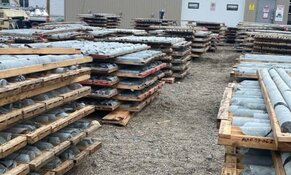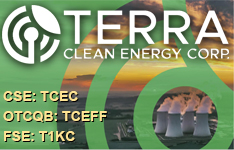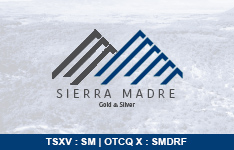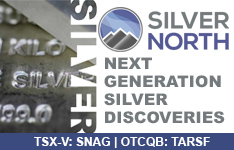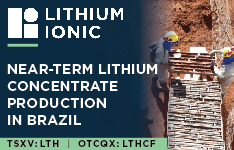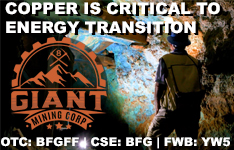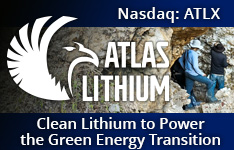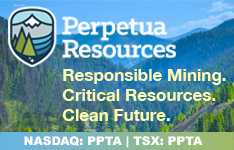West Red Lake Gold Mines Ltd. (WRLG:TSX.V; WRLGF:OTCQB; FRA:UJO) is preparing to release a series of closely watched announcements tied to its Madsen gold project in Red Lake, Ontario. During a recent call with Streetwise Reports, Vice President of Communications Gwen Preston emphasized that the upcoming bulk sample results represent “the most important piece of news the company will put out since buying the project.”
The bulk sample, collected from three areas within the Madsen resource, will be detailed in three separate news releases beginning at the end of April. The first will report on planned versus actual mined tonnage and grade. Preston explained that these data points “validate the entire thesis” behind WRLG’s acquisition of the asset, particularly in comparison to the previous operator’s challenges.
A second release will disclose gold production and sales figures, followed by a third that will share operational learnings from test mining. This includes the ability to safely mine adjacent to historical workings—an area of concern prior to this test phase.
“The answer is, we can mine right up against them, and they stay where they are, which is great,” said Preston. She added that the mining team now enters production with “six months of getting ourselves used to mining,” mitigating start-up risks.
An important operational shift is also emerging at Madsen. The company is modifying the high cut-off grade of 4 grams per tonne used in its Pre-Feasibility Study (PFS). Instead of adhering strictly to narrow high-grade stopes, WRLG will incorporate adjacent zones of slightly lower-grade material, enabling the use of more cost-effective longhole stoping methods. “We won’t be quite at the 7.8 grams per tonne that is the PFS average,” Preston noted, “but it’s by choice and for better economics.”
Looking ahead, WRLG also expects to release definition drill results in mid-May, which will follow visible gold intercepts described as “more visible gold than we’ve ever seen.” These results will further inform near-term mine planning and potential reserve growth.
Preston also addressed questions about the potential impact of cross-border trade conditions, clarifying that WRLG is largely insulated from tariff disputes between Canada and the U.S. “We will sell our gold in the province for Canadian dollars,” she said. “We’re not going to get hit with tariffs because we will not sell directly to America.”
Gold’s Surge Reflects Systemic Shifts in Global Finance
Gold continued to command attention in global markets through April as its price trajectory reinforced the metal’s position as a core asset in an increasingly fragmented financial system. On April 22, Reuters reported that spot gold briefly touched a record high of US$3,500.05 per ounce before easing to US$3,372.68 by late afternoon trading. While the pullback was attributed in part to U.S.-China trade optimism and a stronger dollar, analysts maintained that macroeconomic pressures continued to support the broader uptrend. Bob Haberkorn of RJO Futures noted, “Comments… hinting towards a possible thaw in the trade war with China, was really when [gold] started to sell off.”
In the Reuters report, Jim Wyckoff, senior analyst at Kitco Metals, added that rising U.S. equity markets and a firming dollar presented temporary headwinds, but emphasized that the long-term outlook for bullion remained strong. Despite the daily drop, gold’s year-to-date gain stood at 29 percent as of that session, marking its 28th all-time high of the year.
According to an April 23 update from GoldFix, JPMorgan officially forecasted gold to reach US$4,000 per ounce by the second quarter of 2026, with an interim target of US$3,675 by late 2025. The bank attributed this expected growth not just to inflationary concerns, but to more systemic pressures, including sustained central bank accumulation, rising recession probabilities, and increasing global monetary fragmentation. “Gold is being repriced not on transitory price shocks but on structural fracture,” the report stated. It also highlighted a quarterly net gold absorption forecast of 710 tonnes from central banks and investors throughout 2025.
In a separate commentary published on April 23, newsletter writer Stewart Thomson underscored that technical retracements in the gold market were expected and provided potential buy zones. He noted that gold's recent gains followed a breakout from a multi-year pattern, describing the current environment as “stagflationary times” that are historically favorable for the sector. Thomson’s analysis also placed the upper boundary of gold’s next wave between US$4,000 and US$5,000 based on Elliott Wave theory.
Looking Deeper: Madsen’s Next Moves and Expansion Vision
With initial bulk sample validation expected in the coming weeks, West Red Lake Gold’s strategy for the Madsen Mine is centered on methodical ramp-up and scalable expansion. The company's investor materials underscore a phased approach focused on near-term gold production while unlocking longer-term upside.
According to the company's April investor presentation, WRLG’s PFS supports a mine restart with a forecasted US$315 million post-tax Net Present Value and 255% internal rate of return. Gold production is projected at 67,600 ounces annually for six full production years, with average head grades of 8.2 grams per tonne and gold recovery of 95.7%. The estimated All-In Sustaining Cost (AISC) stands at US$1,681 per ounce, with initial capital remaining at US$44 million.
WRLG has already invested heavily in operational readiness, including key capital projects such as the Connection Drift, expected to be completed by March 2025. and a new on-site camp. The company plans to seek a mill permit amendment to increase throughput beyond the current 800 tonnes per day.
Additionally, the Rowan deposit, located approximately 80 kilometers from Madsen, is expected to be the subject of a standalone Preliminary Economic Assessment (PEA) by June. According to Preston, this conceptual model will explore toll milling options and is anticipated to assign a valuation between US$250 million and US$300 million to Rowan based on its inferred resource of 12.8 grams per tonne gold.
Beyond Madsen and Rowan, further upside is supported by WRLG’s control of additional targets, including the Fork deposit and Upper 8 Zone, which remain underexplored. The company’s technical teams are conducting detailed definition drilling to tighten geologic models from 20-meter to 7-meter spacing, a strategy to reduce continuity risk and increase resource confidence.
WRLG’s strategy is underpinned by its fully permitted status, strong safety record, and significant sunk capital from previous operators - over US$350 million in infrastructure investments - setting the stage for near-term production with long-term growth potential.
Analysts Highlight Progress and Revaluation Potential at West Red Lake Gold
Analyst coverage of West Red Lake Gold Mines Ltd. (TSX-V: WRLG; OTCQB: WRLGF; FRA: UJ0) has intensified in recent weeks as the company advances toward its first gold pour at the Madsen project in Ontario.
On March 19, Cantor Fitzgerald analyst Matthew O'Keefe issued a Buy rating and a one-year target price that implied a 114% return. In his research note, O’Keefe cited construction progress, including 94% completion of the 1.4-kilometer connection drift, acceleration in underground development, and operational readiness supported by a new 114-person camp facility.
On March 27, Chen Lin of What is Chen Buying? What is Chen Selling? projected further upside if the company executes as expected, stating that West Red Lake Gold "should be a couple of dollar stock," and that its warrants "should be 10x at least."
On April 3, Jeff Clark of The Gold Advisor reiterated a Strong Buy recommendation, describing the company as being on the “preproduction golden runway.” Clark noted that the stock could benefit from both the broader upward movement in gold and the start of production at Madsen.
Most recently, on April 14, Paul O’Brien of Velocity Trade Capital gave West Red Lake an Outperform rating and set a target price of CA$1.25.
Ownership and Share Structure
Streetwise Ownership Overview*
West Red Lake Gold Mines Ltd. (WRLG:TSX.V; WRLGF:OTCQB; FRA:UJO)
Strategic investor Sprott Resource Lending Corp. holds about 8%. Institutions hold about 30%, management, insiders, and advisors hold about 10%, and the remaining shares are held by retail investors.
The company's market cap is CA$200.28 million. The 52-week range for the stock is CA$0.52 to CA$1.04.
| Want to be the first to know about interesting Gold investment ideas? Sign up to receive the FREE Streetwise Reports' newsletter. | Subscribe |
Important Disclosures:
- West Red Lake Gold Mines Ltd. is a billboard sponsor of Streetwise Reports and pays SWR a monthly sponsorship fee between US$4,000 and US$5,000.
- As of the date of this article, officers and/or employees of Streetwise Reports LLC (including members of their household) own securities of West Red Lake Gold Mines Ltd.
- Doresa Banning wrote this article for Streetwise Reports LLC and provides services to Streetwise Reports as an independent contractor.
- This article does not constitute investment advice and is not a solicitation for any investment. Streetwise Reports does not render general or specific investment advice and the information on Streetwise Reports should not be considered a recommendation to buy or sell any security. Each reader is encouraged to consult with his or her personal financial adviser and perform their own comprehensive investment research. By opening this page, each reader accepts and agrees to Streetwise Reports' terms of use and full legal disclaimer. Streetwise Reports does not endorse or recommend the business, products, services or securities of any company.
For additional disclosures, please click here.


